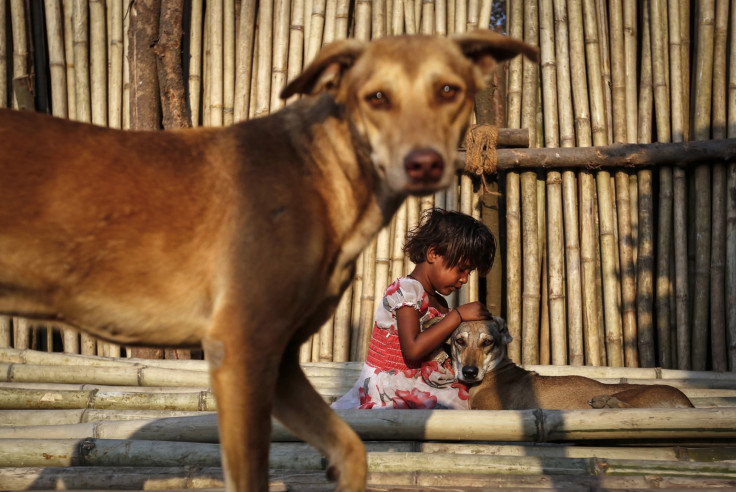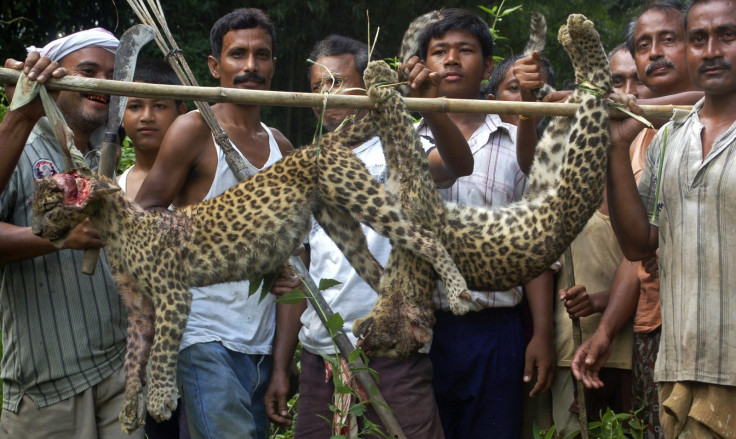Indian Leopards Develop Taste for Domestic Dogs and Cats, Finds Study

Domestic dogs and cats are high up on the leopard's menu, says a study led by the Wildlife Conservation Society-India and Centre for Wildlife Studies, Bangalore.
In India's agricultural landscapes bordering parks and sanctuaries, leopards seem to have developed a taste for man's best friend over other livestock available.
Studying scat samples for leopards in India's Ahmednagar district in Maharashtra, lead author Vidya Athreya found that 87% of their diet was made up of domestic animals.
Domestic dogs were the most common prey item at 39% and domestic cats second at 15%, while 17% of the leopard's diet consisted of assorted wild animals including rodents, monkeys, mongoose, and birds.
"Our research in fact shows the density of domestic dogs and cats in the study area can sustain more than 10 times the current population of leopards," Athreya told IBTimesUK.
A leopard would need a dog-sized prey once a week or so. "The area studied has a dog density of 25 per sq km and a leopard's territory there is about 15 sq km (which is 375 owned dogs in a leopard's territory). It is a lot more prey than the leopard needs and I am not even talking about the rest of the stray dogs, pigs, cats, rats, goats and cattle and dead animals farmers dispose of in the landscape, " she added.
She believes the preference for dogs may also be due to the fact that most livestock are locked up safely at night.
Study co-author Dr K Ullas Karanth, WCS Director for Science-Asia, said, "During the past two-to-three decades, legal regulation of leopard hunting, increased conservation awareness, and the rising numbers of feral dogs as prey have all led to an increase in leopard numbers outside of nature reserves in agricultural landscapes. While this is good news for conservation and a tribute to the social tolerance of Indian people, it also poses major challenges of managing conflict that occasionally breaks out. Only sound science can help us face this challenge."
While studies have shown large numbers of predators in areas with a large prey base, the present one looked at persistence of high numbers in close proximity to human-dominated landscapes.
Panthera pardu, or the leopard, has been shown earlier to be able to adapt to a range of domestic prey. It has increasingly been making it to the news with instances of the animal in urban areas also increasing.

Of course, these are areas that have recently been acquired from the wilderness following urban expansion.
In urban areas, it is livestock loss and the fear of leopards in the proximity of their homes that becomes the focus of leopard-human conflict. As revealed by the present study, leopard presence was noted within metres of human dwellings.
The study area chosen was at least 18 km away from the nearest Harishchandragad sanctuary.
On whether the conclusions from the present study applies to the rest of the Indian landscape where humans and wildlife live in proximity, Athreya pointed out that gazetteers and hunting stories written by the British in the last century too refer to leopards making away with dogs.
Talk to the local population where leopards are present (in the hills) and you find the common theme is "leopards come for dogs". Furthermore, shepherds who have traditionally moved in the landscape with large number of goats and sheep often put metal collars with spikes on their dogs to protect them from leopards - indicating that they too are aware that leopards come for their dogs, she noted.
The study appears in the 11 September issue of the international journal Oryx.
© Copyright IBTimes 2025. All rights reserved.





















